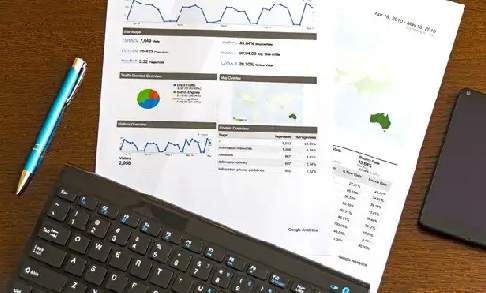A digital strategy helps brands to create a broad vision of how they want to position their brand in the market. It helps brands create a roadmap to reach, engage and influence their existing customers and to develop strategies to bring new customers on board. A good digital strategy evaluates what is currently being done, how to further optimize the current digital marketing activities, and what steps need to be taken to reach the overall marketing goals.

Steps to Build a Digital Strategy
Step 1 – Create your buyer’s persona
The first step is to understand who your customers are. You can create a digital strategy once you know the ideal customer characteristics that help you in identifying who they are, where they are, and what is the best method to use to reach out to them. When creating a buyers persona data should include:
• Income
• Age
• Gender
• Location
• Buying habits
• Purchase patterns
Step 2. Set up your goals
Creating the goals that you want to achieve using digital marketing goals can be lead generation, increasing website traffic, brand awareness, sales promotions, etc. While setting your digital goals it’s important to keep in mind the main business goal that the brand is trying to achieve. Your digital and business goals should be linked with each other.
Step3. Analyze your existing channels and digital assets
Analyze your existing digital channels to see what works and what doesn’t. Identify any gaps and how to further optimize your channels to get better reach and engagement. Also, pay attention to your existing digital assets to see what can be improved. Digital assets can be split into three broad categories.
• Owned media: Owned media are the assets your brand owns like website, social media accounts, blogs, etc.
• Paid Media: Paid media is all the channels you spend on like Google ads, promotions on social media, sponsored posts.
• Earned Media: Earned media contains other website mentions, PR activities, Positive customer testimonies, etc.
Step 4. Create a content library
Now that you know who your customers are and what assets and channels are available to you the next step would be to create content. Content can be in the form of a blog post, images, videos, and even audio. Content should be relatable, searchable, and actionable.
It’s important to create different content for different channels and content should be optimized for the channels that it’s being posted on.
Step 5. Leverage new traffic sources
Your digital strategy should identify new sources to drive-up traffic. The sources will depend on your overall goals and the content being created.
Some examples of new sources could be:Google Discover Ads
• Google Shopping Search
• Optimizing your content for voice search
• Optimizing your content for Google rich snippets
Step 6. Remarketing
Your digital strategy has to consist of some form of remarketing. With remarketing, you can show repeated ads to a customer who may have visited your website or social media accounts but did not make a purchase or subscribe to your services.
Step 7. Conversion optimization
Another integral step to planning your digital strategy is conversion optimization. Conversion optimization is the process of optimizing your website so that visitors are encouraged to take action. This can be done through improving website design, landing page optimization, improving call-to-action buttons, etc.
Step 8. Review and Evaluate your strategy
Digital marketing is constantly evolving with new updates, trends, and features. It’s important to evaluate your digital strategy from time to time to make sure your strategy is relevant so you can capitalize on all the updates and trends. It also helps you evaluate your strategy so you can make changes and find new approaches to your goals and objectives.



